Winching at South Cerney
Months had slipped past since my last flight and frustratingly, it looked like this trend would continue into 2025. I’d rejoined the North Devon and Avon Hang Gliding clubs, but weather conditions for their prominent ‘easier’ sites were not aligned with my availability. Unusually, the last few weeks had seen remarkably good weather, so when an opportunity to fly with Birdwings was posted by Richard on Telegram, I cleared my scheduled.
Birdwings are based at South Cerney airfield, approximately 14km northwest of Swindon. They are predominately a winch operation with the BHPA Accuracy Team. In recent years, Richard and my former team from Suffolk, had made efforts to establish hang glider winching there, but it had been a while since [see A new British hang gliding club is born].
Richard, still keen to establish a hang glider winch operation advertised the day on Telegram. Soon after, pilots of varying levels of currency became available. I was firmly in the ‘rusty’ category, having last winched in 2017 [that one not ending too well for myself and glider]. I was a little apprehensive to return to winching but remembered how much I enjoyed my time flying with the Suffolk team, so committed to fly.
Preparation
After being briefed on the site and where and where not we are supposed to go, we rigged our gliders. Annoyingly, I rigged my glider flat and when I tensioned the sail, I heard a little pop as a small unnoticed twig, protruding from the ground, punctured the undersurface of my left wing. A few choice words followed but on reflection, after 10 years of ownership, the glider was in amazing condition. A sail patch would make a sufficient repair, but that would have to wait.
After an extensive glider check, I was ready. My only doubt was the positioning of the chest release on my harness. Later, with Richard’s assistance, it was repositioned on the harness in a very much improved position.
Tow 1
After I watched the experienced and current hang glider launches, it was time for the ‘rusties’ to get going. The wind had now veered more towards the south, so the first of two re-alignments of the winch and launch was required after which, my turn to be winched had arrived.
Richard reassured me that it would all come back to me and gave me a final brief that mostly comprised of, “keep the wings level”. After a final hang and release check, I was ready.
Attached to the winch I instructed “Up slack” and the line was slowly drawn in until it gently tugged on my chest. I braced against this and instructed “Hold” then, as Richard had recommended, took half a step forward to reduce the tension. There was a gentle breeze on my face that indicated the wind blew straight down the winchline. Everyone was quiet and anticipated my next instruction. At that moment, I was the most apprehensive I had been in a while. For a moment, I unwisely reflected on my last winch launch in Suffolk that had ended so disastrously before I quickly I cleared my mind and focussed on the moment.
My wings were level, and the wind was bang on. My mouth was insanely dry, and my lips stuck together as the verbalisation of the words “All out” formed in my head. I prized my lips apart, took a deep breath and called, “All out”.
For a moment, nothing happened, then the sound of the towline as it slid across the grass as it became taught and began to pull me forward. I began to run as the glider lifted above me then pulled in a little and ran faster before I could no longer keep up. It didn’t matter, as my feet had left the ground and I began to rocket upward.
Richard’s words echoed in my head, “Keep the wings level”. I can’t remember what I did first, transferred my hands to the base bar, moved to prone, or first release; everything was a bit of a blur. Quite a lot happened in those initial moments, but once I felt established on the tow and being very careful not to double release, I released the towline and began to relax as I was towed to my top release.
It didn’t feel particularly high, but when I felt the tension back off, I released, watched the line parachute away and glanced down to ensure nothing else was connected to me. It wasn’t and I was free, unbound from the ground below. I settled into my harness and began a slow turn to my right and hoped to find a thermal.
I didn’t connect with anything so began my landing approach. We’re not allowed to overfly the adjacent military base, so I few over the A419 and watched the cars below whistle past and used the constant aspect approach to judge my final approach to landing.
I overflew the motor bike wheelie school below, climbed onto my uprights and nudged the glider left to avoid the glider already parked in the landing field. As I felt the energy dissipate from the glider, I aggressively flared and the ground met my feet with a no step landing.
Perfect, I was elated. I turned my glider so it faced downwind and began to extract myself from my harness – this was a little more involved as my chest release needed to be detached before I could extract my self [a future purchase of a pip-pin, will simplify this!].
Tow 1
My first winch since 2017.
12 Apr 2025
Flight Analysis (Heart Rate)
I recorded my entire flight using my Garmin smart watch, this included altitude and interestingly, my heart rate data.
I’d never seen this before on any of my past flights, but interestingly, it was evident that I was apprehensive on launch with a sustained heart rate of around 145bpm that increased to 167bpm during the tow up, before it settled to around 90bpm once released and on my downward glide. As I approached landing, my heart rate once again increased to a peak of 170bpm, where it dropped to 140bpm upon landing, then increased as I walked my glider across the airfield.
Tow 2
It wasn’t long before someone asked if I wanted to tow again as there was no one else willing or ready to go. I pondered for a moment, then decided to go and clipped in and moved my glider to launch. My second launch was much more familiar; echoing Richard’s comments about it all coming back to me.
The air was certainly more active and as I reached my top release, my glider tipped right. I released and almost instantly dived to the right. I concluded I must have been right on the edge of a thermal so did a 180 and attempted to find it.
As I tracked northward, following the A419 the air hinted of something lifting with the occasional beep emitted from my vario. I maintained my flight in these moments of lift by wobbling around before I turned onto final only to hit more lift that forced me to execute an additional and unexpected s-turn to realign for landing [I considered a 360 but decided an s-turn would be the safer option due to the motor bike school beneath me].
As I neared the ground, the energy in the glider dissipated much quicker than I expected [probably too slow on my final] and when I flared the glider, it simply stopped and dropped down forcing me to land on my knees and the glider’s wheels. The tell-tail sign of muddied knees was a giveaway of a not so perfect landing!
Summary
I decided that would be my last flight of the day and as the wind veered to a more south westerly direction, the winch and launch were again repositioned for the second and final time. High level cloud had now formed across the sky and a front was upon the airfield, hinting that some moisture would soon follow.
Initial tow conversion flights began for Tim on his Sport 2, and Neil on his Malibu. First flights focussed on towing to the first release at an altitude of around 100-150 feet. Both pilots did exceptionally well, but by the time things were ready for the high-level flights, the wind had veered and blew from a westerly direction. That was the sign to conclude the day.
Pilots out:


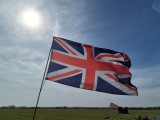
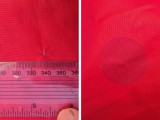
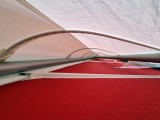
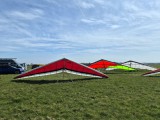
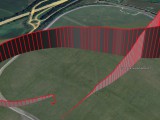
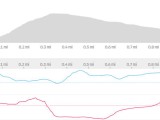
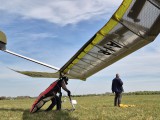
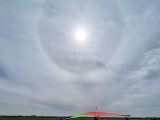
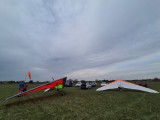
SouthCerney-thumbnail.jpg)